Native flora is glorious during the festive season
From Christmas bush to Christmas bells, there are blooming wonderful natives to be found this December.
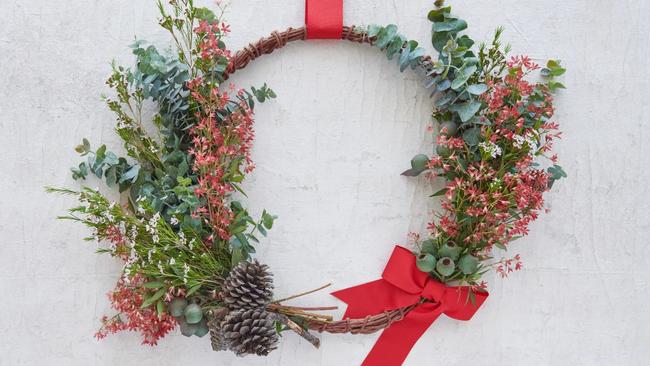
There’s a native plant associated with Christmas, no matter where you live across Australia. NSW Christmas bush (Ceratopetalum gummiferum) is a small tree with cream flowers in spring, followed by a long display of distinctive red calyces (the outer flower parts). Improved forms include ‘Alberys Red’, ‘Red Red Red’ and the dwarf ‘Johanna’s Christmas’. Native Christmas bells (Blandfordia) are perennials found mostly in damp, acidic, sandy soils. Three species from NSW and one from Tasmania all have clusters of waxy, red-and-yellow bells on slender stems and tough, grass-like leaves.
Victorian Christmas bush (Prostanthera lasianthos) is one of the mint bushes, known for its aromatic leaves. This one grows 2m-6m tall, bearing sprays of white to pale mauve flowers with spotted throats.
In South Australia, the ACT and Tasmania you might call Bursaria spinosa Christmas bush. It’s a prickly shrub loved for its sweet-smelling, profuse sprays of cream flowers. These are highly attractive to butterflies and other insects. In Tasmania the fruit attracts green rosellas.
Under the mistletoe
The Western Australian Christmas tree (Nuytsia) bears fragrant, golden flowers. It is the largest mistletoe in the world.
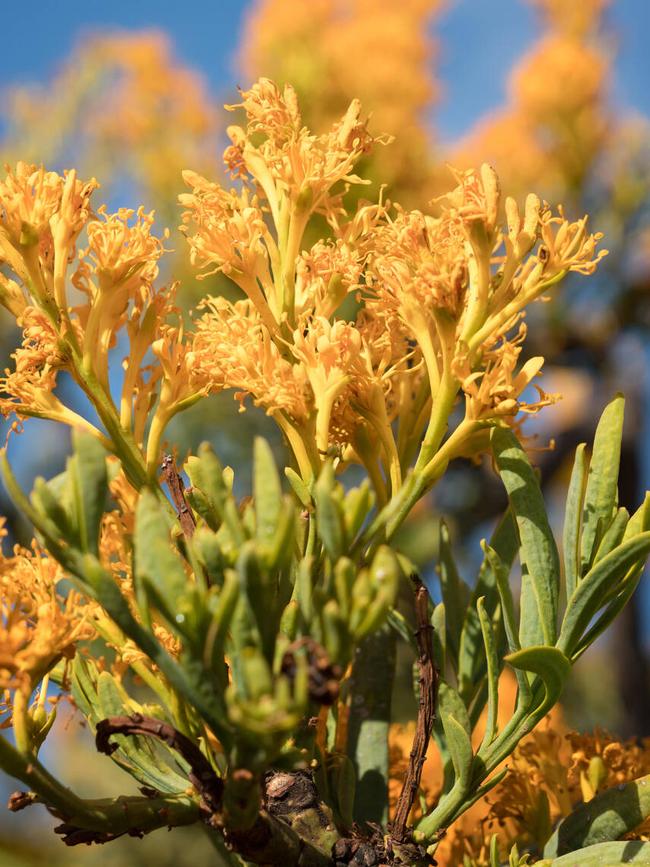
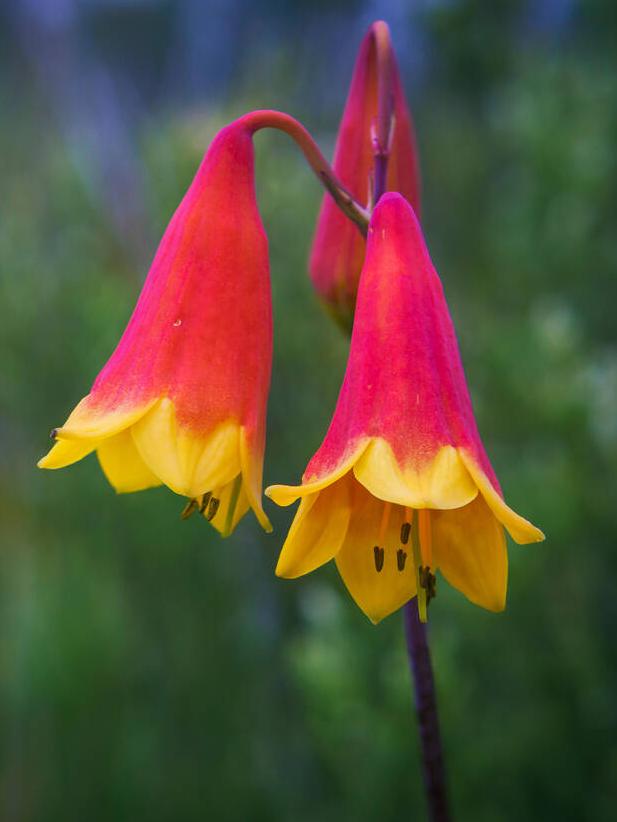
Growing on the roots of other plants, it becomes a spectacular 8m-tall tree. Queensland’s Christmas orchid (Calanthe triplicata) grows naturally on the rainforest floor, but does well in a pot to bring inside at Christmas. It has broad, pleated leaves and showy white flowers.
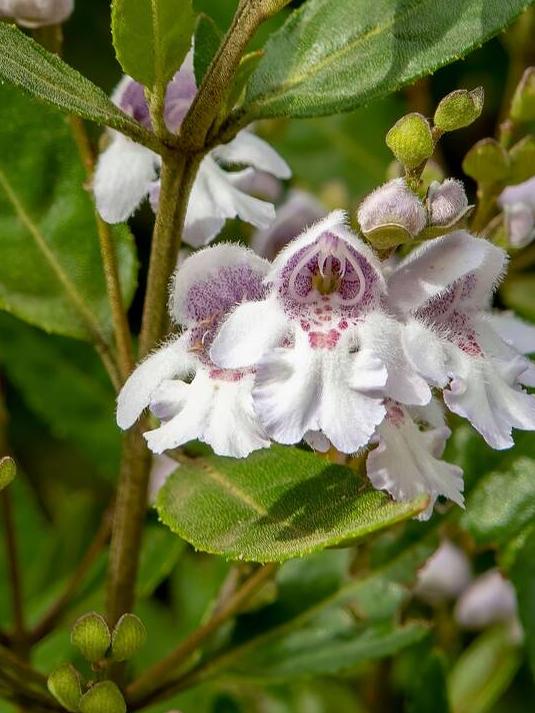
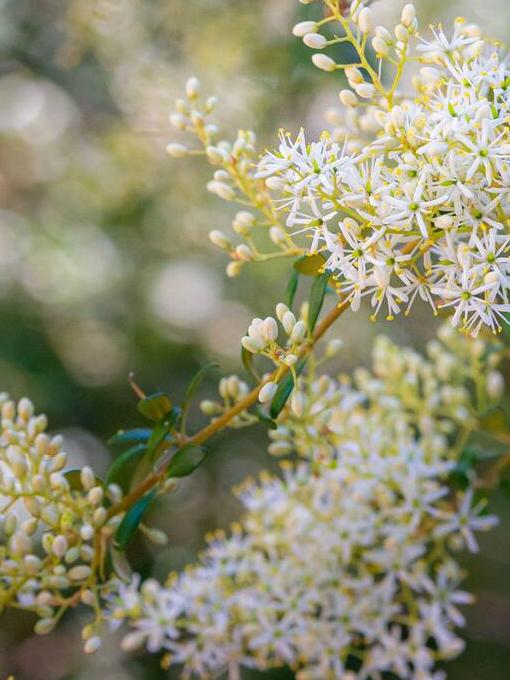
Q&A
What can I plant in sunny, narrow beds around a saltwater pool? I’d like non-flowering greenery as my child fears bees.
Mark Crouch, Adelaide
Most lush foliage plants (think palms, elephant’s ears, gingers and cordylines) won’t take full sun. You also need narrow, non-messy and non-spiky plants. Canna ‘Tropicanna’ and ‘Black Tropicanna’, with vibrantly coloured and patterned leaves, fit the bill if you cut off the flower spikes. Bees tend not to visit grasses and plants with double flowers, and rarely visit geraniums, especially red ones. Also look at dwarf Nandina varieties such as ‘Obsession’ and ‘Gulf Stream’, and variegated forms of mirror plant (Coprosma).
Is the white scale on pigface a mould or insect? Is it related to ants? How do you get
rid of it?
Kristin Constance, Perth
Scales are sap-sucking insects. Ants are often associated because they feed on scales’ sweet exudates and ward off predators to protect that food source. Ants also move scales to new feeding areas. Prune off heavily infested stems. Spray PestOil or Eco-Oil thoroughly at two-week intervals until controlled.
We love the shade of our neighbour’s pine trees but the needles seem to suppress our plants. Can we counteract this?
David Hayes, Sydney
As well as the shade and root competition they create, pine trees exhibit allelopathy, where chemicals exuded from leaves and roots suppress the growth of nearby plants, and also influence the composition and activity of soil microbes. Removing the pine needles and adding compost and other organic matter regularly might help, but you are fighting nature. The soil is likely acidic. Test the pH and use lime to counteract acidity.
Send your questions to: helenyoungtwig@gmail.com The best question for December/January wins Paul Bangay’s latest book, A Life in Garden Design (Thames and Hudson), worth $80.




To join the conversation, please log in. Don't have an account? Register
Join the conversation, you are commenting as Logout